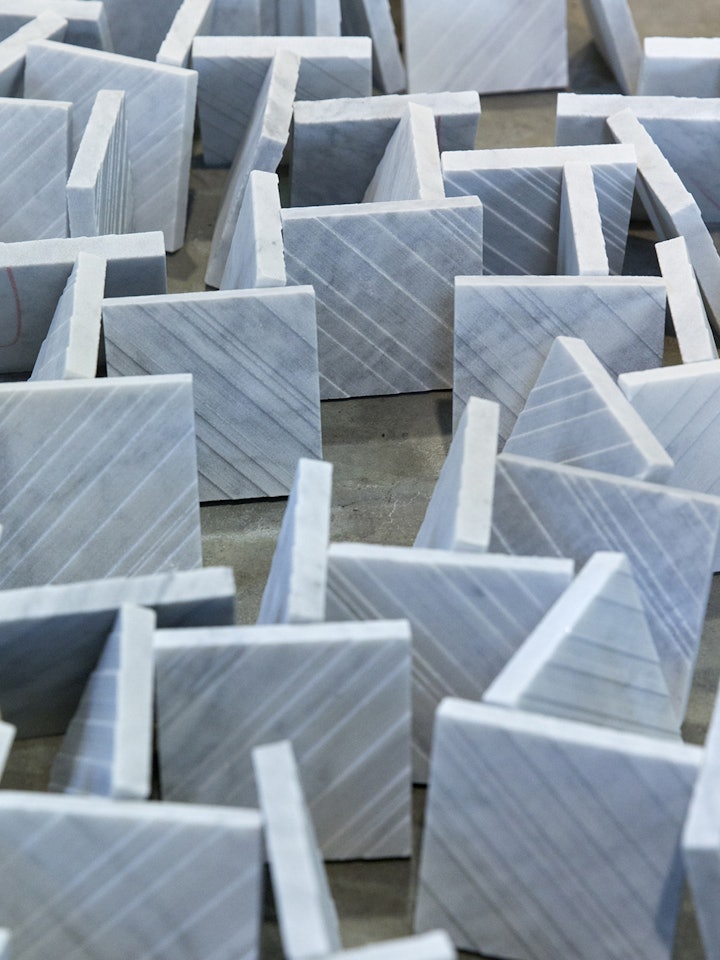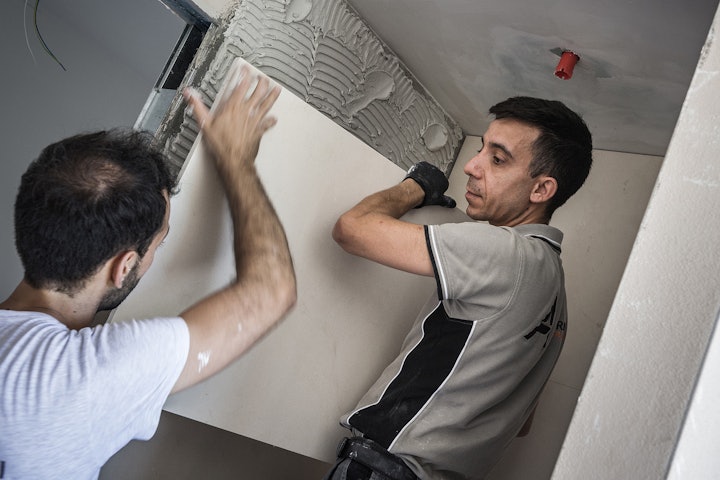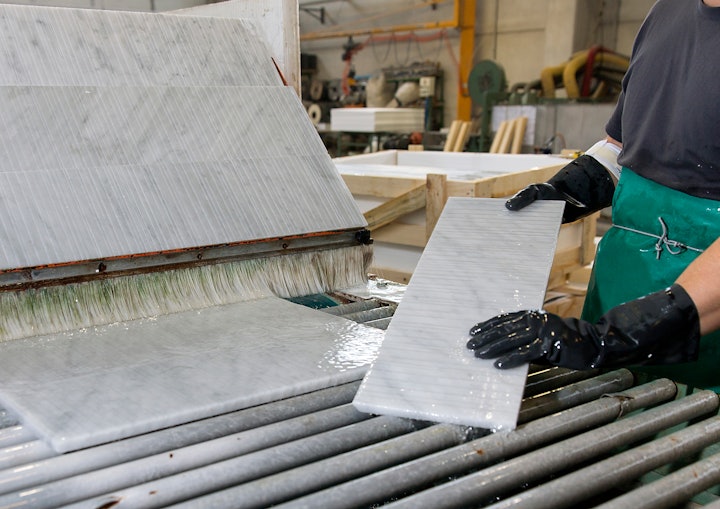Top techniques for lifting and moving slabs of natural stone
03.2022
There some top techniques for lifting and moving slabs of natural stone. Discover them all with us and get ready for your next project
How to handle marble slabs safely
A construction site, whatever its size, is like its own mini-world in which a cast of different players meet up every day, each responsible for their own role, but all needing to work together without getting in one another’s way, to ensure everything proceeds smoothly and efficiently.
There are a multitude of tasks and operations that are carried out daily, most of which carry some level of risk when it comes to health and safety, and one of the most dangerous is the lifting and moving around of slabs of stone. These are generally very large and as such, require not just extreme care, but also a delicate touch.
In today’s article, we take a look at this “heavyweight” topic and share techniques for carrying such tasks out carefully, efficiently and safely.

Stone slab dimensions
Moving or hauling slabs of marble or other types of stone around a worksite invariably involves handling extremely large and heavy objects. In general, we can divide slabs into two categories:
- Standard slabs
- Cut-to-size or oversized slabs
The first thing to take into consideration is that a standard slab will typically measure around 1 square metre with a thickness of 1 cm and weighs 27 kilograms. When it comes to cut-to-size slabs, however, here the average measurements are around 2 square metres by 2 cm thick, so doing some quick maths is enough to know you are talking about a single piece weighing over 100 kilograms. As such, the right equipment for lifting a slab out of its crate and then moving it around a sit makes life a lot easier, reduces risk of breakage and is far more reassuring on the health and safety front.

Key equipment for hauling stone slabs
There are three main techniques for moving slabs of stone safely and efficiently:
- Professional-grade trolleys or forklifts are among the most commonly used types of equipment, particularly for oversize slabs such as those mentioned above.
- Vacuum lifts or structures with suction cups are ideal for semi-worked or polished slabs.
- The other favoured approach is to use a type of frame with movable suction cups placed along anti-friction runners.
Now, let’s explore each of these three common techniques for handling large slabs in a little more detail.

Professional-grade forklifts, trolleys and dollies
Forklifts, trolleys (or dollies as they are more often called) are essential pieces of equipment for lifting and moving oversize slabs around. Once the stone is extracted from its crate or whatever type of packaging it arrived in, they greatly facilitate moving it around with minimised risk both to anyone on the worksite and to the slab itself.
In addition to these items, as we said above, you may also choose to opt for solutions based around suction cups, used in different type of contraptions and we will look at those now.

Suction cup solutions for handling slabs of stone
If you are frequently handling large heavy pieces of material, another option is a vacuum lift. Fitted with one or more suction plates depending on the type, size and weight of the slab, this is ideal for semi-worked or polished stone surfaces.
There are also the so-called “suction cups” that are usually made of a supporting structure with an arm that can be manually tilted from 0 to 90 degrees. Essentially, the cups are vulcanised onto the support and through a type of pump system that creates a vacuum, clamping the slab, holding it fixed. Here, to ensure safety and effectiveness, it is necessary to use a specific pump system that allows you increase the suction strength as required so that the slabs remain attached.

Movable suction cups on runners
A variation on the theme is to use a type of frame with movable suction cups placed along anti-friction runners.
You could describe it as a small section of a railway track in aluminium, with optional telescopic cross-bars that can extend from 90 up to 160 cm in some cases, making it easy to extract a slab from a crate. Anti-slip, anti-stain rubber handles help with grip and ergonomics, allowing you to manoeuvre your stone into place with minimal risk of damage either to the material itself or your back. This is a particular useful solution for laying slabs vertically.
In conclusion, the techniques and equipment used to lift heavy stone slabs and move them around a worksite are an important aspect to ensure the construction or installation process proceeds safely, without damage to product and people. If you have any questions about any aspect of working with natural stone or are developing a project, please get in touch and we will be happy to provide design assistance and suggest the right products to bring your vision to life.





